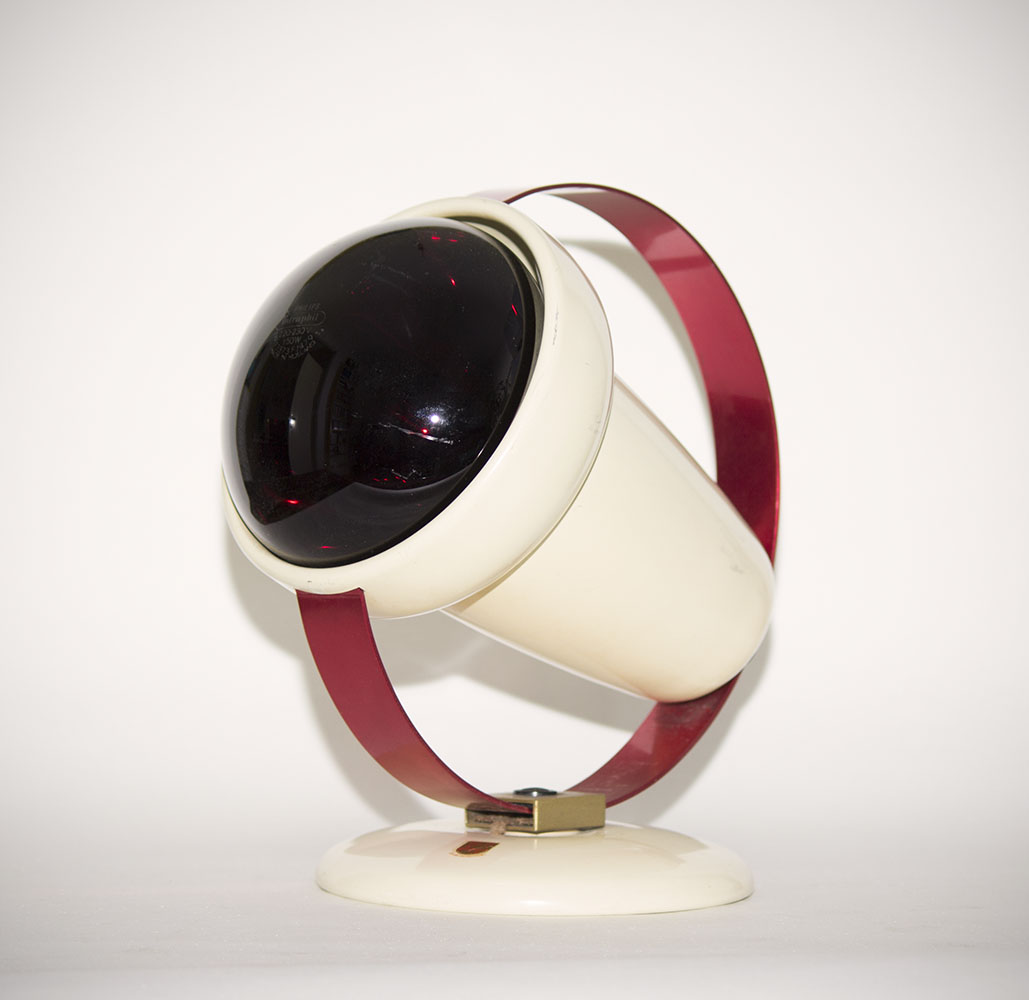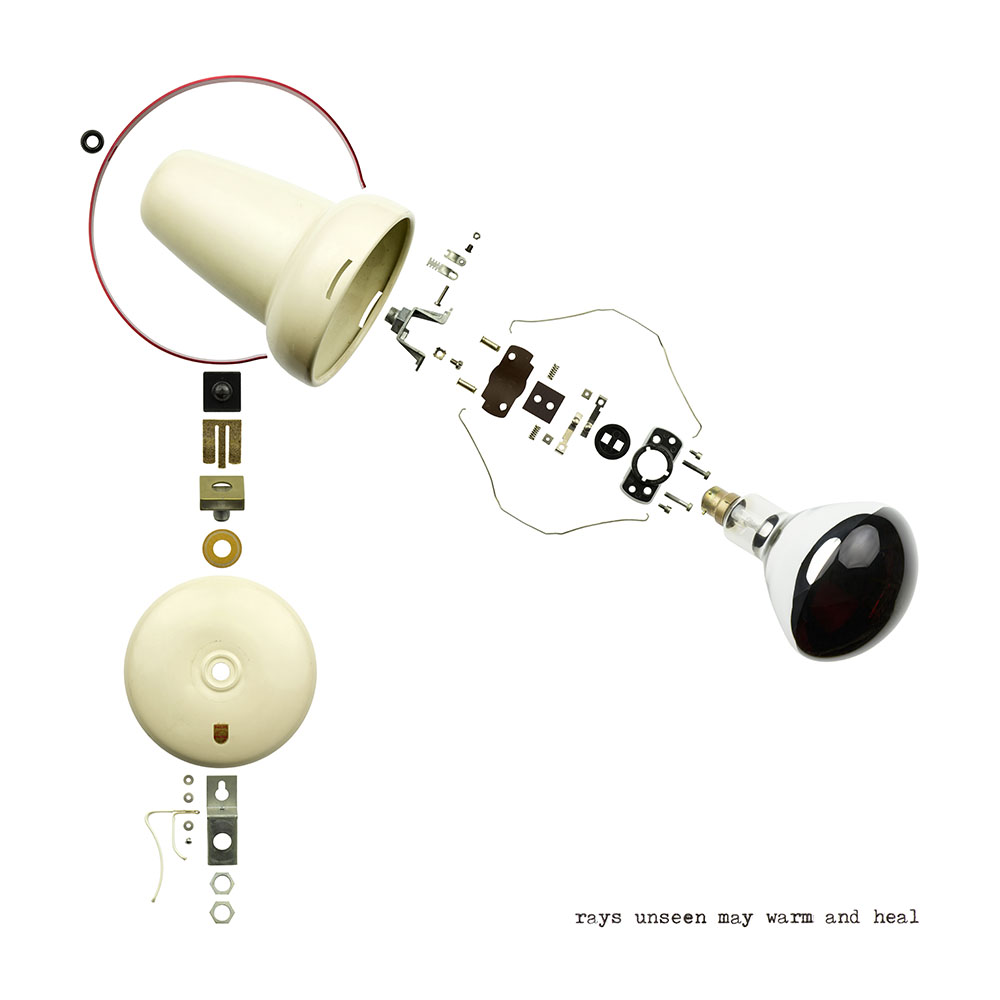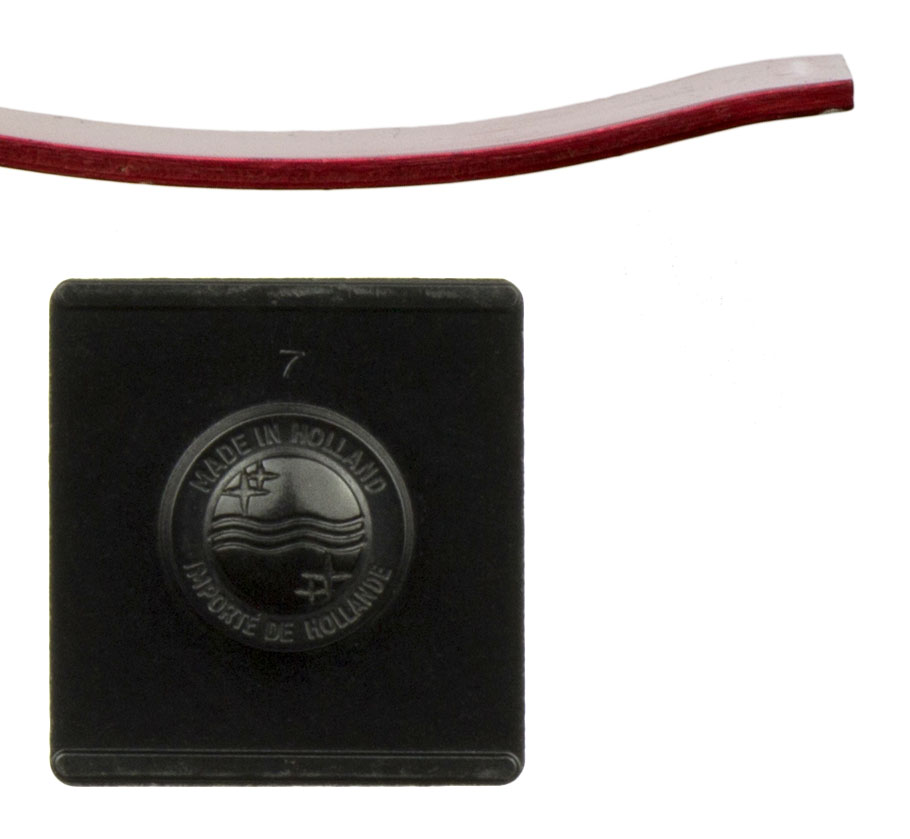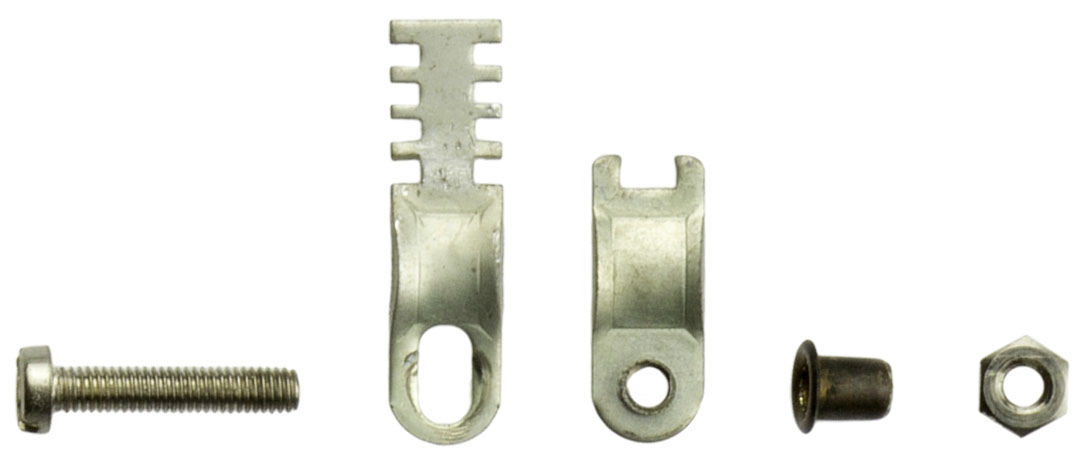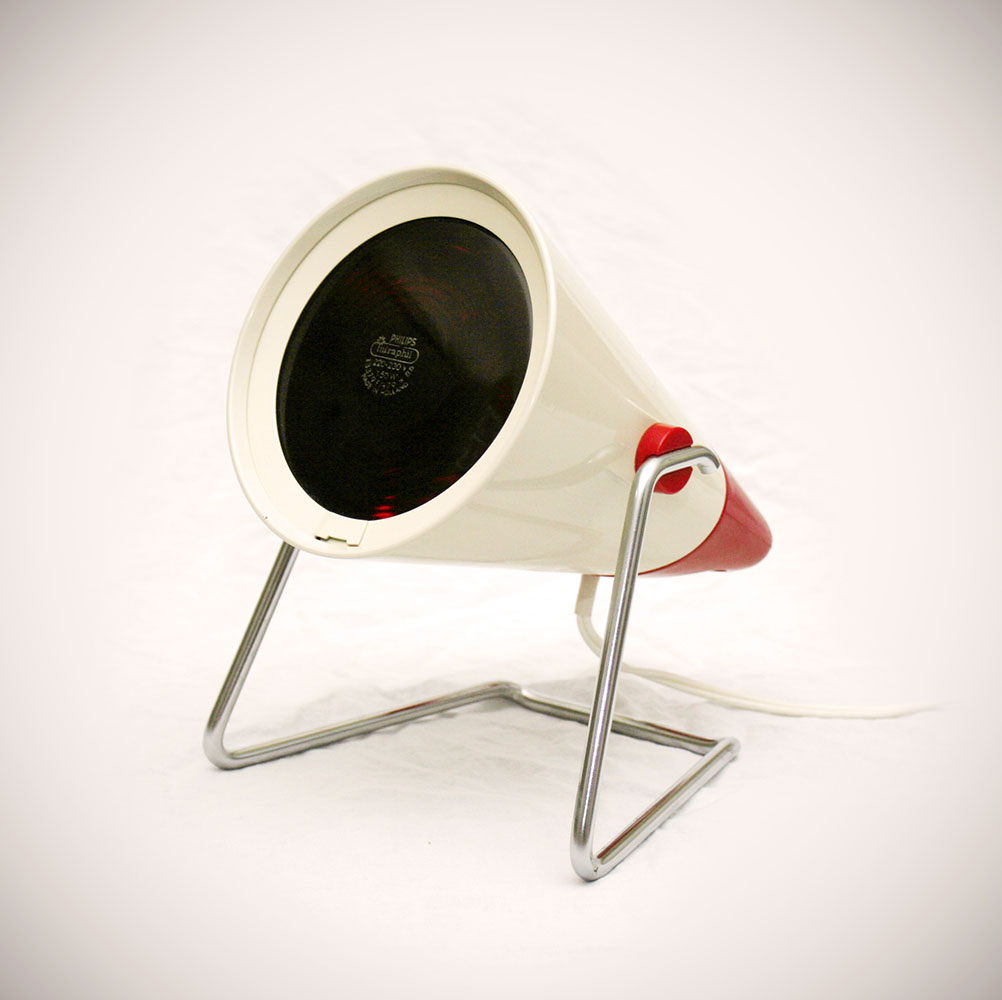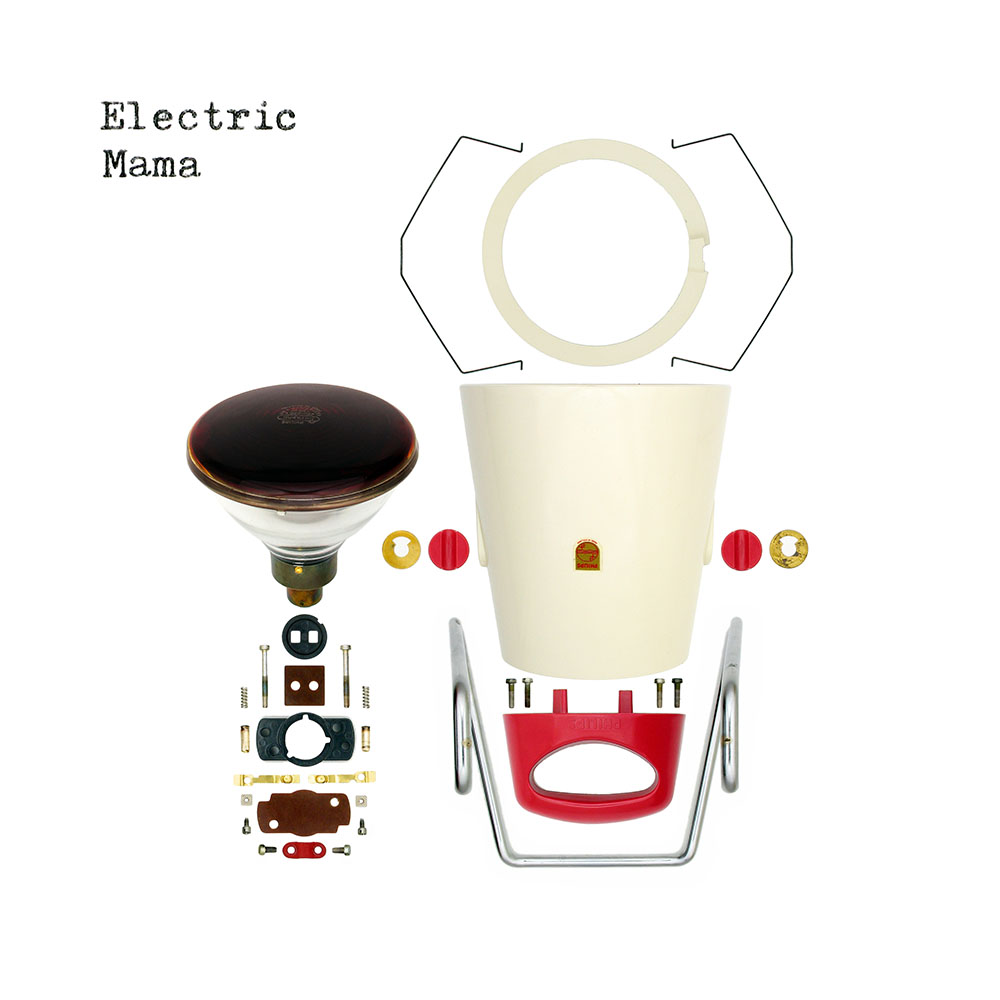
Mercury Mania
When the US entered the space race in 1958 and started Project Mercury, many companies in the West were quick to jump on the bandwagon and use the public’s enthusiasm for all things space-related for marketing purposes.
Philips, being a Dutch company, went for maximum effect with minimal effort and decided to re-market one of their existing products. Their 752x series of heat lamps already showed a striking resemblance to the Mercury capsule*, so they quickly designed a new box and put it on the market as a Mercury Capsule Model (for adults) and a Mercury Capsule Toy (for kids).
The Model/Toy had roughly the same shape as the Mercury capsule and could be positioned in a wide range of angles to mimic the various stages of flight –it was an exciting challenge for kids and adults alike to get the re-entry angle exactly right, to make sure the capsule wouldn’t bounce off of the atmosphere or burn up due to excessive friction. But the best part was the red light coming from the bottom of the ‘capsule’, which looked just like Mercury’s heat shield on re-entry.
The Model/Toy was initially met with the zealous consumerism so typical of the 1950s. But within days, sales dropped dramatically, as a couple of issues surfaced. First of all, the 150 Watt ‘heat shield’ generated quite a bit of heat. People had to put their air conditioners in overdrive to keep their homes and offices at liveable temperatures (note that the utter waste of energy was not an issue in those days). Secondly, and more importantly, the Toy didn’t meet safety standards –lenient though they were back then. Many kids burnt their little hands on the heat shield, and after the first reports of children re-enacting the capsule’s sea landing in their bath tubs, Philips quickly re-called all their Mercury Capsule Models/Toys.
Ironically, this failure would lead to one of Philips’s greatest successes. They knew their next Heat Lamp could in no way resemble the 752x series, so their engineers rose to the challenge and designed the now iconic KL 7500 Infraphil Heat Lamp, as seen below.
*It has been suggested that NASA actually based their capsule design on the 752x heat lamp and several members of the Mercury team did indeed have a Philips 752x lamp at home. But Philips never sued NASA -perhaps because they wanted to forget the whole 7529 fiasco as soon as possible.
*****
Deco Facts
This deconstruction consists of 47 parts and measures 12,533 by 12,533 pixels.
For your nostalgic entertainment, the manual of this Infraphil can be found here (English) and here (Dutch).
Also, you can find a nice overview of all Infraphils from 1945-2012 here (English) and here (Dutch).
*****

